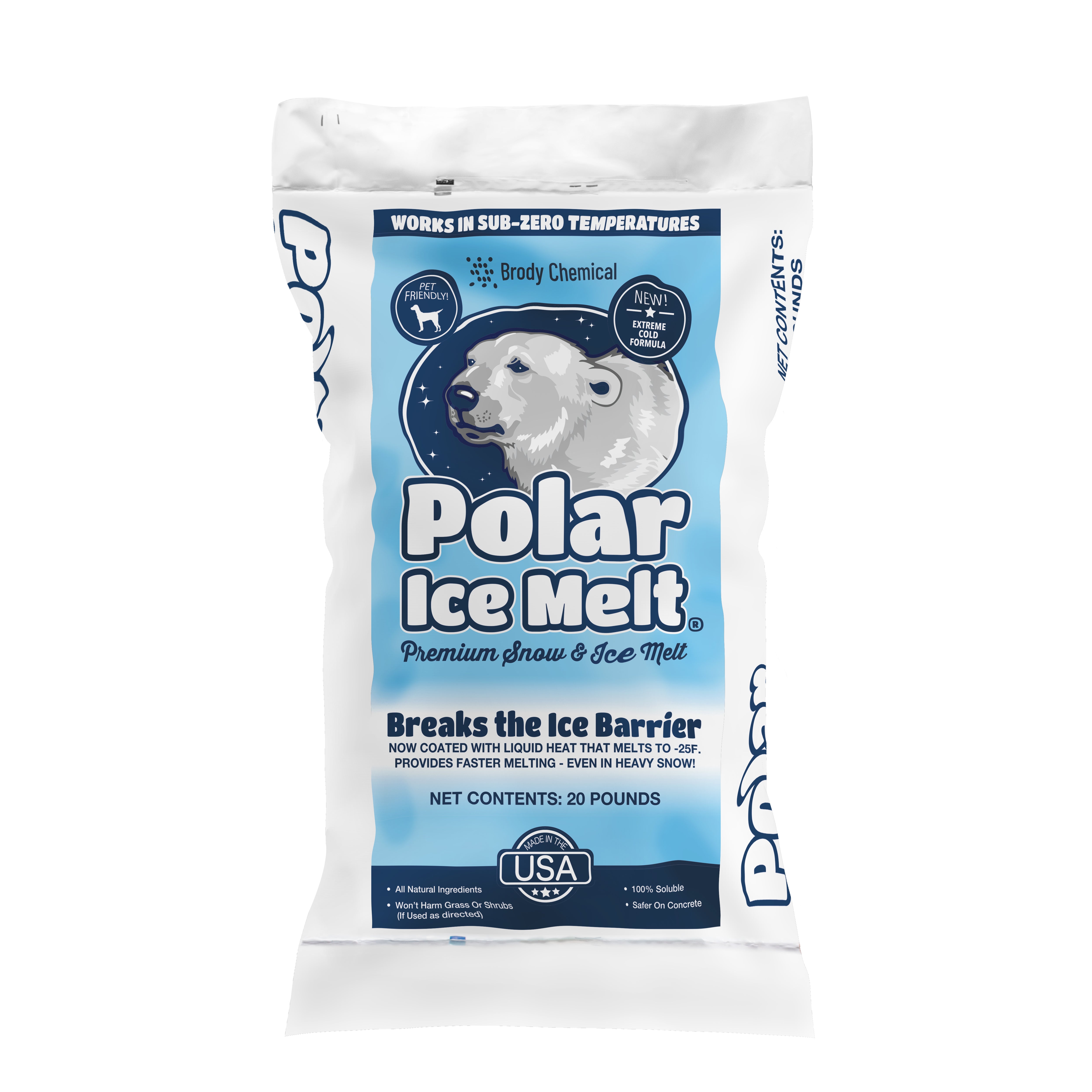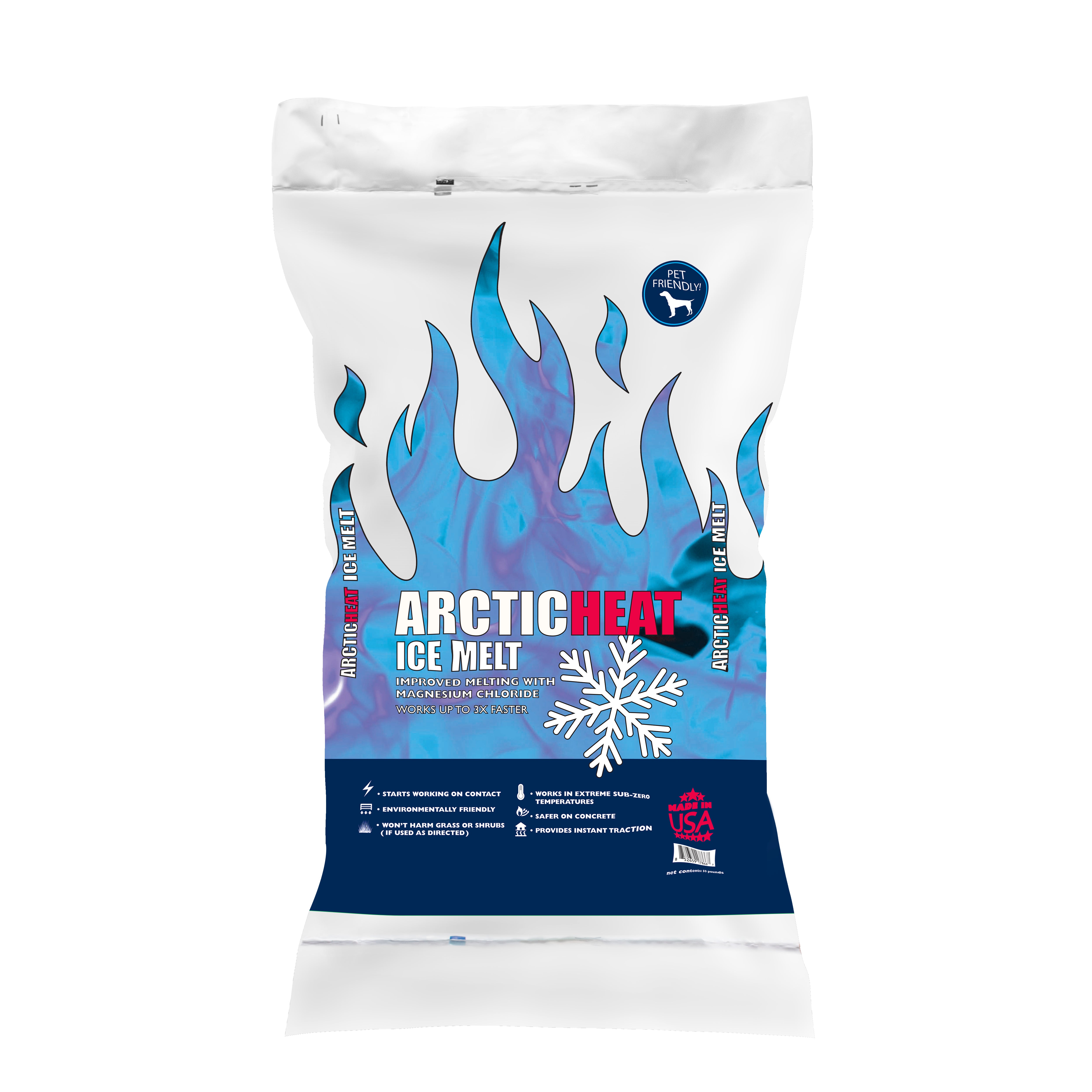Winter weather wreaks havoc on concrete driveways and walkways across the country. Homeowners unknowingly damage their concrete by using the wrong ice melt products, leading to expensive repairs that could easily be avoided. Rock salt might be cheap, but it destroys concrete through chemical reactions and freeze-thaw cycles. The smart move? Pick ice melt products designed to protect your concrete investment. This simple decision can add decades to your driveway's life and save you from costly replacement projects down the road.
Key Takeaways
- Rock salt dramatically increases how much water concrete absorbs, making freeze damage worse
- Every freeze-thaw cycle chips away at concrete, causing visible scaling and pitting
- Better ice melt products work at colder temperatures, reducing how often damaging cycles happen
- Switching to safer products now prevents thousands in concrete replacement costs later
- Smart application methods and cleanup reduce long-term surface damage
- Environmentally friendly ice melts protect both concrete and surrounding plants
Impact of Ice Melt on Concrete
Concrete damage starts with a simple physics problem. Water expands about 9% when it freezes. That expansion creates incredible pressure inside concrete's tiny pores - like thousands of miniature jackhammers working from the inside out.
Rock salt makes everything worse. Sodium chloride acts like a sponge, causing concrete to absorb way more water than normal. Scientists have measured concrete holding 10% extra water after salt treatment. More water means more expansion. More expansion means more damage.
You'll spot the destruction in several ways:
- Scaling: Surface layers start peeling off like old paint
- Spalling: Bigger chunks break away, leaving rough holes
- Pitting: Small craters appear across the surface
- Roughening: Smooth concrete becomes increasingly bumpy
Winter temperatures bounce above and below freezing constantly. Each cycle damages concrete a little more. Contractors see dramatic deterioration after just two winters of heavy salt use.
Chemistry makes the problem worse too. Salt dissolves calcium hydroxide - one of concrete's main binding ingredients. This creates more holes for water to hide in, which means even more freeze damage next time.
Recommendation:
Facing winter's chill? Brody Chemical Snow & Ice Melt products are designed to tackle icy conditions effectively. Whether you're dealing with sidewalks, driveways, or commercial spaces, our solutions ensure safety and reliability.
Explore Now →
Benefits of Using the Safest Ice Melt for Concrete
Money talks when it comes to concrete protection. Replacing a damaged driveway costs $4-8 per square foot for basic concrete, jumping to $15-25 for decorative styles. A typical driveway replacement can easily hit $5,000-$10,000.
Good concrete lasts 25-30 years with proper care. Salt-damaged concrete often needs replacement in just 10-15 years. That difference represents massive savings for any homeowner willing to spend a few extra dollars on quality ice melt.
Your lawn and garden benefit too. Ice melt that is safe for concrete won't burn grass or kill plants like rock salt does. Kids and pets can play on treated areas without worrying about chemical exposure.
Real estate agents know that curb appeal matters. Cracked, pitted driveways turn off potential buyers immediately. Well-maintained concrete adds real value to your property and makes a great first impression.
Insurance companies sometimes deny claims for damage caused by improper maintenance. Using appropriate ice melt products and keeping records protects you if something unexpected happens.
Products like Eco Melt prove you don't have to choose between effectiveness and environmental responsibility. These biodegradable options protect concrete while being gentle on surrounding ecosystems.

What to Look for in a Safe Ice Melt Product
Shopping for concrete-safe ice melt means knowing which ingredients to avoid and which ones actually help. Skip anything with high amounts of sodium chloride - that's just fancy rock salt that will wreck your concrete.
Stay Away From:
- Pure rock salt products
- Anything listing sodium chloride first
- Cheap blends with mostly salt content
Look for These Instead:
- Calcium chloride: Works down to -25°F and generates heat
- Magnesium chloride: Plant-friendly and effective to -13°F
- Calcium magnesium acetate: No chlorides, completely biodegradable
Calcium chloride beats everything else for concrete protection. It melts ice at much colder temperatures than salt, which means fewer freeze-thaw cycles hitting your concrete. Plus, it creates heat when it dissolves, so you need less product to get the job done.
Magnesium chloride works great if you have lots of plants nearby. Gardeners love this stuff because it won't kill grass or damage shrubs like salt does.
Calcium magnesium acetate costs more but gives ultimate protection. It contains zero chlorides and breaks down naturally in soil. Instead of melting ice chemically, it prevents ice from sticking to surfaces in the first place.
Reading labels carefully reveals what you're really buying. Look for terms like "concrete-safe" or "non-corrosive" on packages. Third-party testing certifications add credibility to manufacturer claims.
Professional products like polar ice melt and ice beater show what's possible when manufacturers engineer formulas specifically for surface protection rather than just the cheapest price.

Tips for Applying Ice Melt Safely on Concrete
How you apply ice melt matters just as much as which product you choose. Get the technique wrong and even safe products can cause problems.
Timing beats everything else. Apply ice melt before snow falls whenever possible. This creates a barrier that stops ice from bonding to concrete. You'll use less product and get better results.
Follow the package directions for coverage amounts. Too much waste money and exposes concrete to unnecessary chemicals. Too little fails to prevent ice formation, forcing you to reapply multiple times.
Smart Application Rules:
- Use spreaders for even coverage instead of dumping piles
- Check temperature ranges before applying - products stop working in extreme cold
- Hit high-traffic areas first for safety
- Never pile product in one spot
Temperature matters more than most people realize. Ice melt products have minimum effectiveness ranges. Apply the wrong product on a really cold night and nothing happens except wasted money.
Clean up afterward! Sweep away slush and leftover chemicals once the ice melts. This prevents concrete from sitting in concentrated chemical solutions for extended periods.
Store products properly during winter. Keep containers sealed and dry to prevent clumping. Wet ice melt doesn't spread evenly and loses effectiveness.
Liquid ice melter gives you precise control over application amounts and coverage patterns, making it easier to protect concrete while using minimal chemicals.
What Type of Ice Melt is Safe for Concrete
Calcium chloride wins for concrete safety and cold-weather performance. This chemical works effectively down to -25°F, way below rock salt's pathetic 15-20°F range. Colder working temperatures mean your concrete faces fewer damaging freeze-thaw cycles.
Magnesium chloride comes in second, especially if you care about plants and landscaping. It works to -13°F while being gentle on vegetation. Many homeowners choose this option for areas near flower beds or lawns.
Ice melt for new concrete requires extra caution. Fresh concrete needs at least 90 days to cure properly before any deicing chemicals touch it. Many contractors recommend waiting through the entire first winter to be completely safe.
Temperature Performance Guide:
- Calcium chloride: -25°F and above
- Magnesium chloride: -13°F and above
- Rock salt: Only works to 15-20°F
Ice melt for concrete surfaces works best when products minimize chemical penetration while still melting ice effectively. Check labels for concrete-safe certifications or surface-friendly designations.
Professional snow removal crews consistently choose calcium chloride for its combination of low-temperature effectiveness and reduced surface damage. The heat it generates during dissolving speeds up melting while preventing those extended freeze-thaw cycles that destroy concrete.
Your Future Steps
Smart ice melt choices protect your concrete investment and save thousands in replacement costs. Calcium chloride and other concrete-safe alternatives prove that effective ice control doesn't require surface-destroying chemicals. Success comes from understanding product differences, applying them correctly, and thinking long-term about concrete preservation. Your driveway represents a significant investment - protect it with informed decisions that balance immediate safety needs with lasting surface integrity.
FAQ
What is the safest ice melt for concrete driveways?
Calcium chloride tops the list for driveway safety, working at extremely cold temperatures while generating heat that prevents concrete-damaging freeze-thaw cycles.
Can I use any ice melt for new concrete surfaces?
Never apply ice melt to concrete less than 90 days old - fresh concrete needs time to cure properly before chemical exposure.
How does ice melt damage concrete over time?
Ice melt increases water absorption into concrete, where freezing water expands and creates internal pressure that gradually cracks and destroys surfaces.
What type of ice melt works best in extreme cold?
Calcium chloride maintains effectiveness down to -25°F, far outperforming rock salt, which stops working around 15-20°F.
Should I remove ice melt residue after use?
Always sweep away slush and chemical residue promptly to prevent prolonged exposure and concentrated chemical absorption into concrete.
How often can I safely apply ice melt to concrete surfaces?
Apply only when necessary for safety, follow package coverage rates, and always clean up between applications to minimize cumulative chemical exposure.



